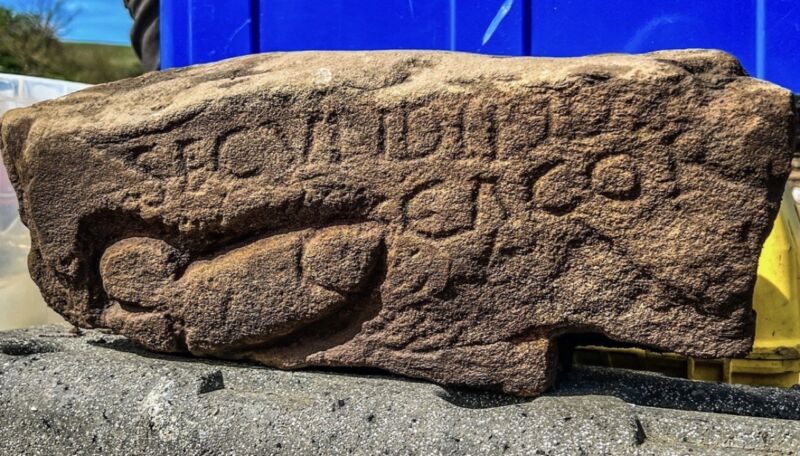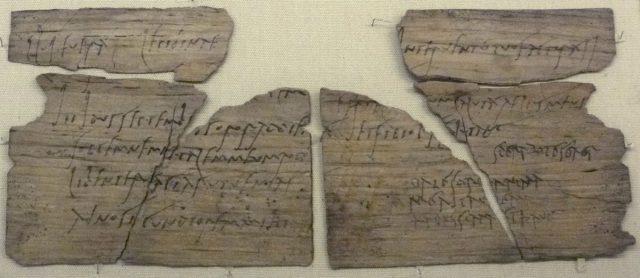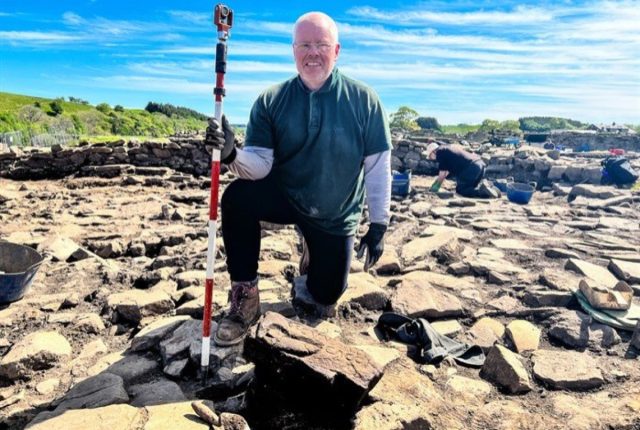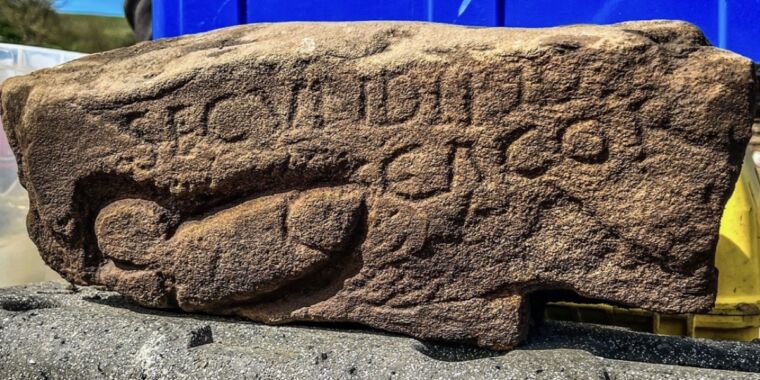
Vindolana Charitable Trust
Archaeologists excavating the remains of a Roman auxiliary fort in the UK recently made a surprising and rather hilarious find: a small stone carved with the unmistakable image of penis—basically an ancient Roman d**k pic, accompanied by a crude insulting message directed at someone the carver clearly disliked.
The Vindolanda site is located south of the defense fortification known as Hadrian’s Wall. An antiquarian named William Camden recorded the existence of the ruins in a 1586 treatise. Over the next 200 years, many people visited the site, discovering a military bathhouse in 1702 and an altar in 1715. The Rev. Anthony Hedley began excavating the site in 1814, but he died before he had the chance to record what he found for posterity. Another altar found in 1914 confirmed that the fort had been called Vindolanda.
Serious archaeological excavation at the site began in the 1930s under the leadership of Eric Birley, whose sons and grandson continued the work after his death, right up to the present day. The oxygen-deprived conditions of the deposits (some of which extend six meters, or 19 feet, into the earth) mean that the recovered artifacts are remarkably well-preserved. These include wooden writing tablets and over a hundred boxwood combs, which would have disintegrated long ago in more oxygen-rich conditions.

The site is most famous for the so-called Vinlandia tablets, among the oldest surviving handwritten documents in the UK. Discovered n 1973, these are thin wooden leaves, about the size of a postcard, with text written in carbon-based ink. Most of the documents are official military communications and personal messages from garrisoned soldiers to their families, revealing many details about life at the fort.
For example, one tablet is a letter from a Roman cavalry officer named Masculus to a prefect asking for more beer to be sent to the garrison. (An army marches on its stomach.) By far the most famous is Tablet 291, written around 100 CE by the wife of a commander of a nearby fort named Claudia Severa. It was addressed to Sulpicia Lepidina inviting her to a birthday party, and represents one of the earliest known examples of a woman writing in Latin.
Among the many other interesting finds: a bronze and silver fibula (a brooch or pin for fastening garments) in 2006; the remains of a female child between 8 and 10, found in a shallow pit in a barrack room in 2010; a wooden toilet seat unearthed in 2014; and two (unmatched) Roman boxing gloves unearthed in 2017, similar to modern full-hand boxing gloves—except these date back to 120 CE.
Also in 2017, archaeologists found cavalry barracks littered with swords, ink tablets, textiles, and arrowheads, among other artifacts. Archaeologists also found a 5th century chalice in 2020, and unearthed a carved sandstone last year depicting a naked warrior figure astride a horse—possibly the Roman deity Mars.

Vindolanda Charitable Trust
As for this latest find, one of the volunteers working on the excavation was a retired biochemist from South Wales named Dylan Herbert, who initially viewed the stone as just another piece of rubble. But when he turned it over, he noticed clear lettering and realized it was far from ordinary. “Only after we removed the mud did I realize the full extent of what I’d uncovered, and I was absolutely delighted,” said Herbert.
The stone is fairly small, measuring 40 cm wide by 15 cm tall (15 inches by 6 inches). Experts in Roman epigraphy recognized the lettering as a mangled version of Secundinus cacator, which translates into (ahem) “Secundinus, the shitter.” The penis image merely added insult to injury—a clever subversion of the traditional interpretation of a phallus as a positive symbol of fertility. The Vindolanda site now has 13 phallic carvings, more than have been discovered at any other dig site along Hadrian’s wall.
“The recovery of an inscription, a direct message from the past, is always a great event on a Roman excavation, but this one really raised our eyebrows when we deciphered the message on the stone,” said Andrew Birley, director of excavations and CEO of the Vindolanda Trust. “Its author clearly had a big problem with Secundinus and was confident enough to announce their thoughts publicly on a stone. I have no doubt that Secundinus would have been less than amused to see this when he was wandering around the site over 1,700 years ago.”








